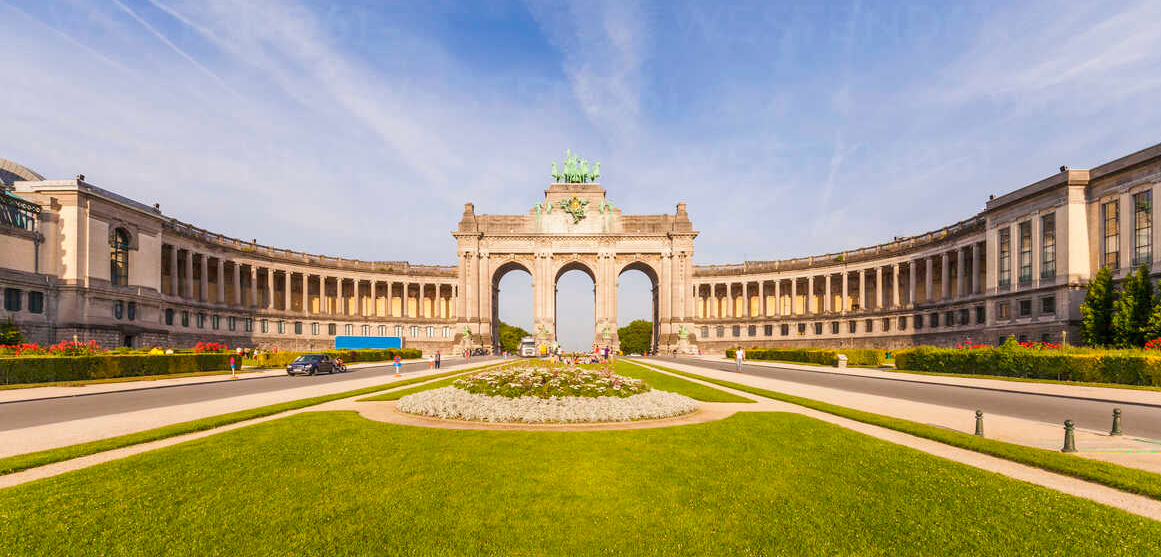Belgium is a country that boasts a rich cultural heritage and is home to numerous historical landmarks. One such significant site is the Cinquantenaire Palace, the Belgium National Monument located in the heart of Brussels. In this article, we will delve into the history, architecture, significance, and visitor information of the Cinquantenaire Palace, offering you a comprehensive guide to this iconic Belgian attraction.
Imagine standing before an architectural marvel that epitomizes Belgium's grandeur and historical legacy. Welcome to the Cinquantenaire Palace, a monumental structure that has captivated visitors for decades. Let's embark on a journey through time and explore the wonders that await within.
History of Cinquantenaire Palace
The origins of the Cinquantenaire Palace can be traced back to the late 19th century when Belgium was at the zenith of its power and influence. Built in celebration of the 50th anniversary of Belgian independence, the palace served as a symbol of national pride and progress.
Architecture and Design
The architecture of the Cinquantenaire Palace is a captivating blend of neoclassical and Renaissance styles. Its imposing facade, adorned with intricate sculptures and majestic colonnades, leaves visitors in awe of its sheer magnificence. The central arch, known as the Arc du Cinquantenaire, stands as a testament to Belgium's historic achievements.
Significance as Belgium National Monument
As a national monument, the Cinquantenaire Palace holds immense cultural and historical significance for the people of Belgium. It stands as a reminder of the nation's journey towards independence and its enduring commitment to preserving its heritage.
Cultural and Historical Exhibitions
Within the palace walls, visitors can explore a multitude of cultural and historical exhibitions that provide a fascinating glimpse into Belgium's past. From art galleries showcasing renowned Flemish painters to exhibitions highlighting significant historical events, the Cinquantenaire Palace offers a diverse range of immersive experiences.
Surrounding Park and Landmarks
Adjacent to the palace lies the Cinquantenaire Park, a sprawling green oasis that provides respite from the bustling city. The park's manicured lawns, charming gardens, and serene fountains make it an ideal spot for relaxation and leisurely strolls. Moreover, the park is home to several notable landmarks, including the Temple of Human Passions and the Great Mosque of Brussels.
Visitor Information and Accessibility
For those planning a visit to the Cinquantenaire Palace, it is important to note that the site is easily accessible via public transportation. Additionally, the palace offers guided tours, ensuring visitors can make the most of their experience by delving deeper into the history and significance of this magnificent monument.
Best Time to Visit
The best time to visit the Cinquantenaire Palace is during the spring and summer months when the park is in full bloom. The pleasant weather allows for leisurely exploration of the palace and its surroundings, creating an enchanting ambiance that enhances the overall experience.
Nearby Attractions
While the Cinquantenaire Palace is undoubtedly a highlight of any visit to Brussels, there are also several other attractions in close proximity that are worth exploring. Just a short distance away is the renowned European Quarter, where you can visit the European Parliament and immerse yourself in the hub of European politics. Additionally, the Royal Palace of Brussels, a magnificent royal residence, is another must-see attraction nearby.
Interesting Facts about Belgium National Monument
Uncover some intriguing facts about the Cinquantenaire Palace that will pique your curiosity:
- The palace was originally built to host the National Exhibition of 1880, showcasing Belgium's industrial and artistic achievements.
- The central arch of the palace is adorned with a chariot drawn by four horses, symbolizing Brabant raising the national flag.
- The palace houses several museums, including the Royal Museum of the Armed Forces and Military History, which showcases an extensive collection of military artifacts.
Conclusion
In conclusion, the Cinquantenaire Palace stands as a remarkable testament to Belgium's rich history and architectural prowess. Its grandeur, cultural significance, and fascinating exhibitions make it a must-visit destination for both locals and tourists alike. As you explore the palace and immerse yourself in its historical allure, you'll gain a deeper appreciation for Belgium's heritage and the remarkable stories it holds.
FAQs
- Is the Cinquantenaire Palace open to the public?
Yes, the palace is open to the public, allowing visitors to explore its exhibitions and marvel at its architecture.
- How long does it take to visit the palace and its surroundings?
The duration of the visit depends on your interests, but it is recommended to allocate at least a few hours to fully appreciate the palace and the surrounding park.
- Are guided tours available?
Yes, guided tours are available at the palace, offering visitors a more in-depth understanding of its history and significance.
- Can I take photographs inside the palace?
Photography is generally allowed inside the palace, but specific restrictions may apply in certain exhibition areas. It is advisable to check with the staff or signage for any guidelines.
- Are there any entry fees?
While the entrance to the palace is usually free, there may be fees for specific exhibitions or guided tours. It is advisable to check the official website or inquire on-site for the most up-to-date information.
Conclusion
- "Cinquantenaire Palace" - Visit Brussels. Available at: https://visit.brussels/en/place/Cinquantenaire-Palace
- "Cinquantenaire Museum" - Royal Museums of Art and History. Available at: https://www.kmkg-mrah.be/cinquantenaire-museum
- "Cinquantenaire Park" - Brussels Environment. Available at: https://environnement.brussels/thematiques/espaces-verts-et-biodiversite/les-espaces-verts/les-parcs/cinquantenaire
